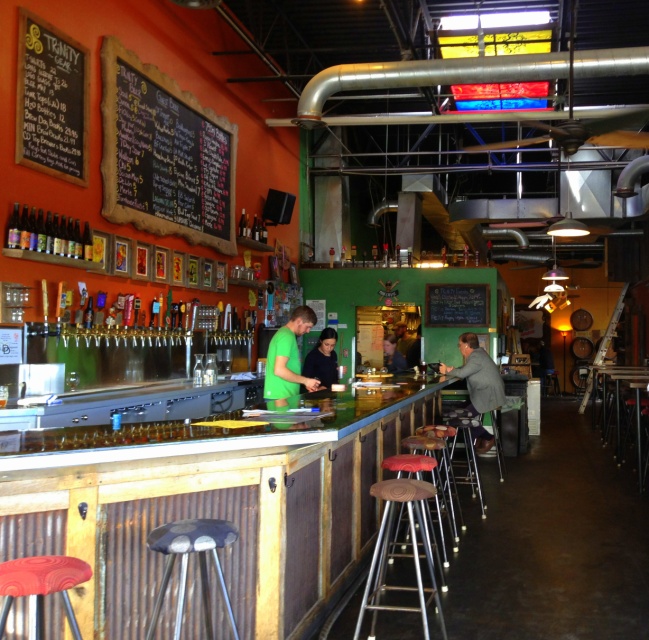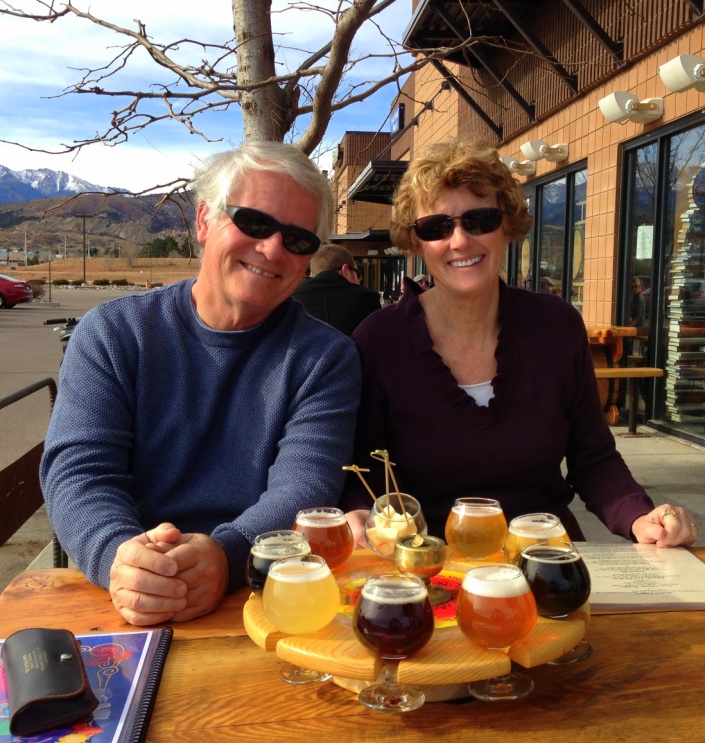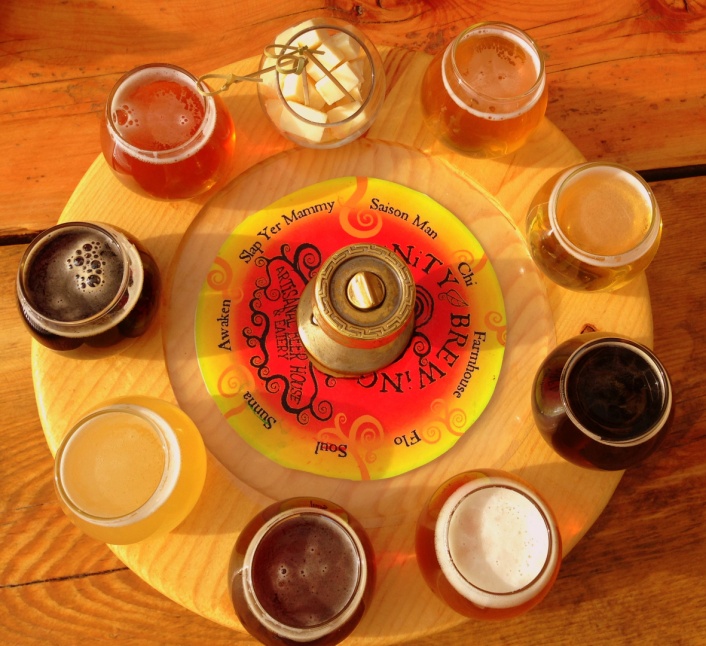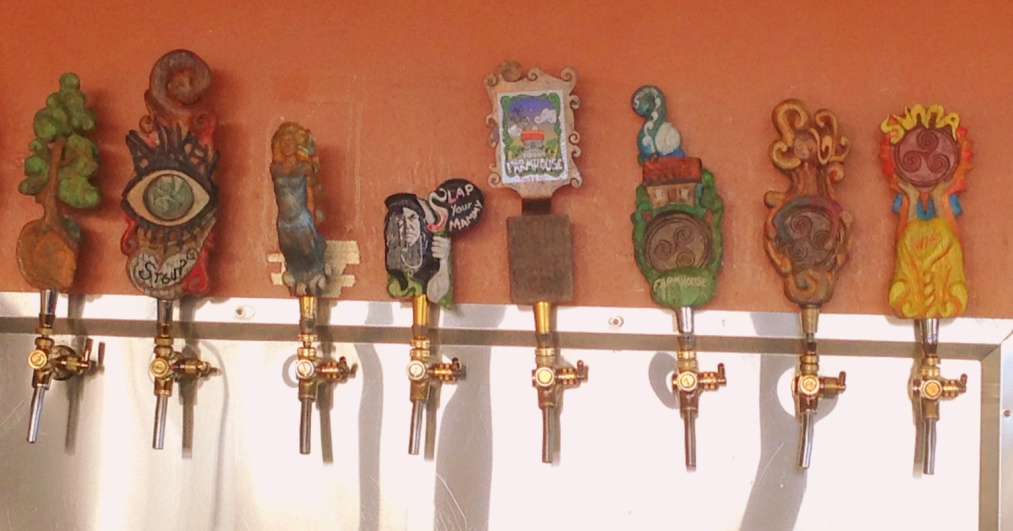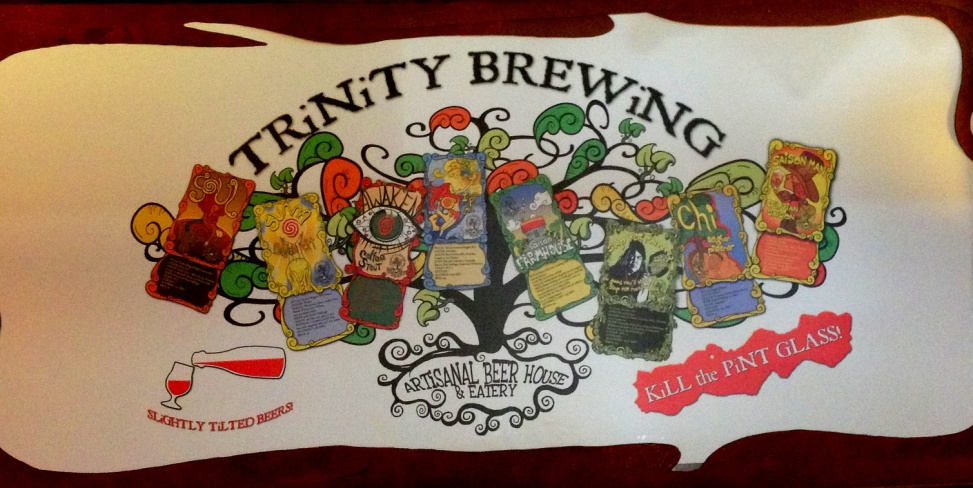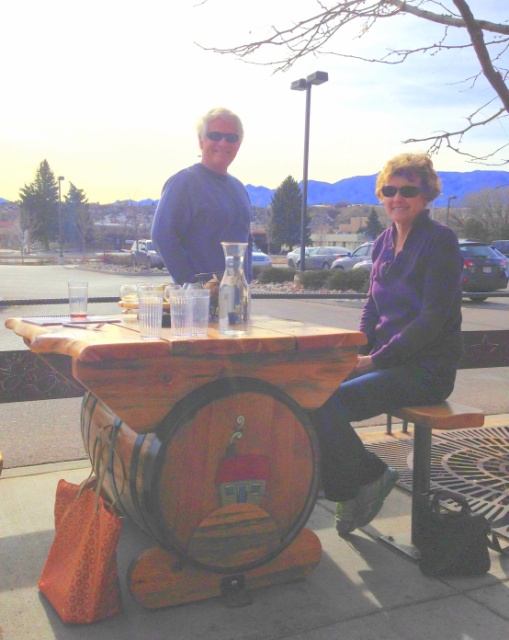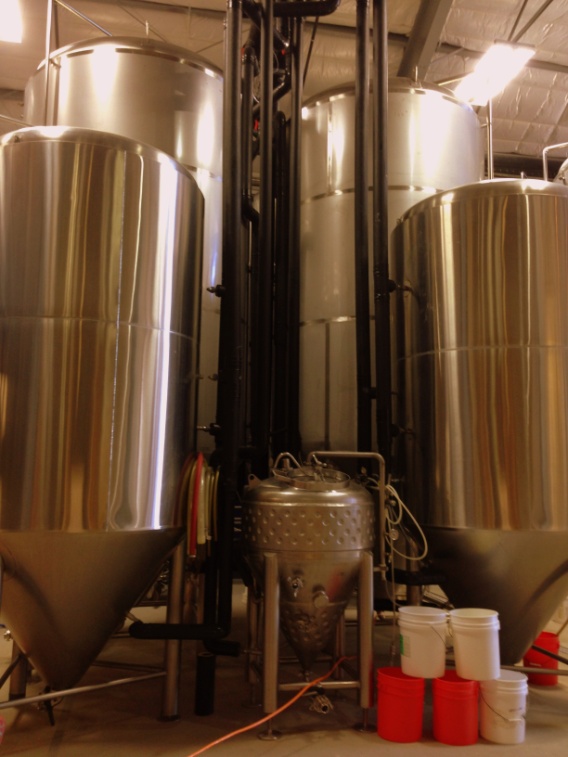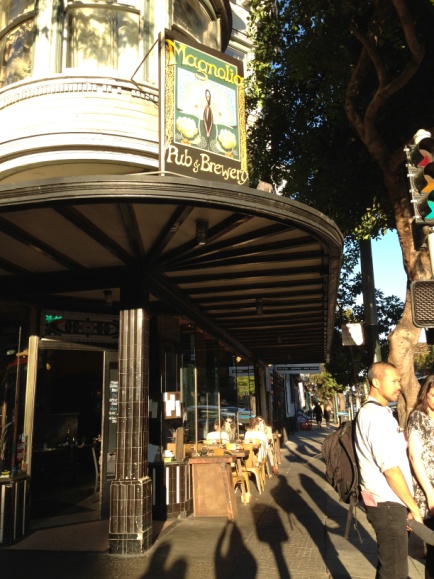By Amy Tindell
When Corliss cruised up to the sliding doors of my La Jolla hotel, she fished a pile of papers from her backseat and deposited them into my lap. The woman had done her research! In my hands rested our options for the night, including a few local breweries and some choice dining establishments. As the night was young, we decided to conquer both genres, and to begin at a point of inspiration: Green Flash Brewing Company.
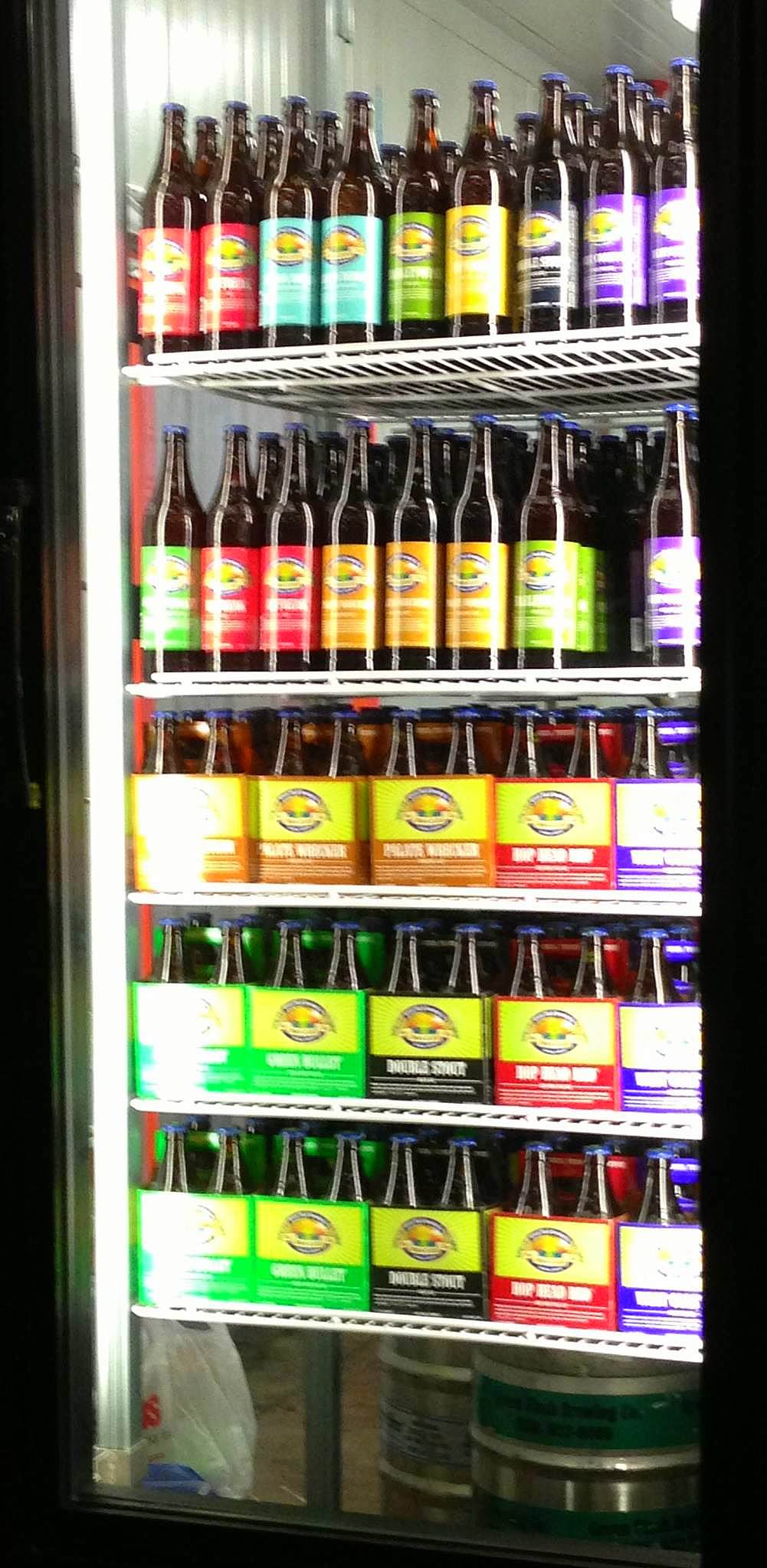

I admit to being a bit dubious as Corliss pulled a Uey toward the parking lot of Green Flash: it is housed in a very corporate-y-looking, mirrored glass building in a business park off Mira Mesa Boulevard. However, my fears were quashed as we entered the 4,000 square foot, dog-friendly tasting area, which featured plenty of un-corporate-y looking people – 68% of whom were wearing trademark hipster plaid shirts or hoodies – 30 state of the art taps, and a beer garden, with wooden cask barrels lining the perimeter and the metallic beer fermenters rising toward the ceiling in the distance.

Mike and Lisa Hinkley founded Green Flash in 2002 after deciding to close their pub in favor of producing their own craft beer. Their beer is not the product of traditional brewing guidelines, but instead represents a hybrid style of the craft. Of course, what starts out as a twist on a tradition can become a guideline: the West Coast IPA developed a following so quickly that it helped define a new category. Brewmaster Chuck Silva sees to it that core, seasonal, collaborative and barrel-aged beers all “blaze their own trail.”
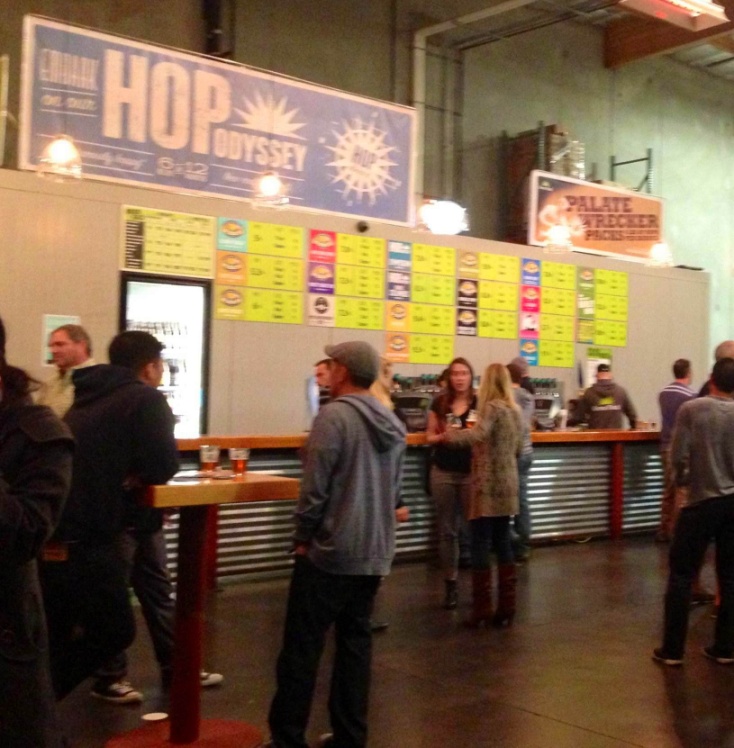
Our beertender, John, very patiently listened to Corliss as she explained my “expertise,” demonstrated by my “blog.” Then, he offered to pour us a flight with our choice from the beckoning 30 taps before us. We started with the East Village Pilsner, a solid Pils if there ever were one. The color of straw, it smelled of grass and wheat, and hit the tongue with a moderate amount of carbonation. East Village’s taste was crisp with notes of grass, and slightly sweet cereal grain malts balanced with some lingering bitterness. This Pils actually did a good job of standing up to the bite of 11th Anniversary IPA, which flowed from the tap a transparent copper, with aromas of grapefruit, grass and pine. The taste followed similarly, with the addition of earthy dank overtones and more resinous pine. It finished dry, crisp, and bitter… but not too bitter.
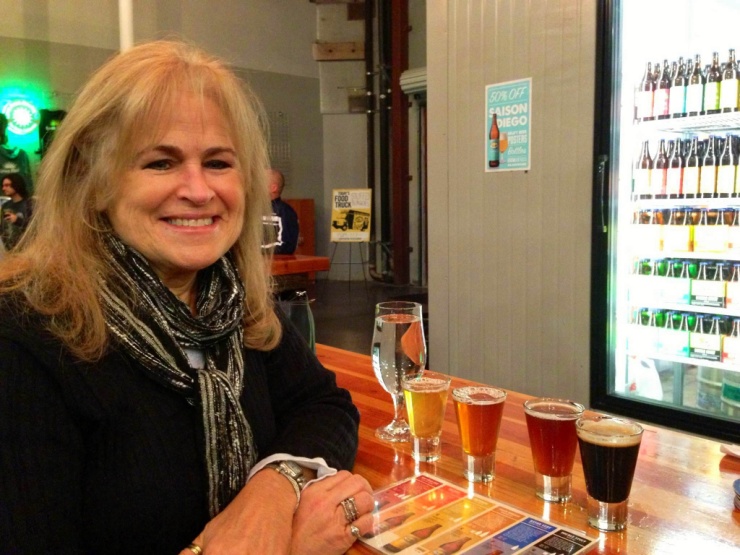
Corliss’ taste buds were very enthusiastic about the chili double stout. It smelled and tasted of roasted malts, chilies, cocoa and bread (tortilla?). The heat of the chili presented itself in each sip, but not overly assertively, and was balanced by the smooth, creamy mouthfeel. My favorite was the Treasure Chest Belgian Brown, peering through the glass in a dark brown and red embodiment. It tasted of brown sugar, raisin, and malty caramel grains, with a hint of citrus hops and the Belgian yeast spice and funk. I read some reviews complaining about the overpowering Brett band-aid flavor, which can be an area of sensitivity for me, but I did not encounter that obstacle when I tasted the Treasure Chest.
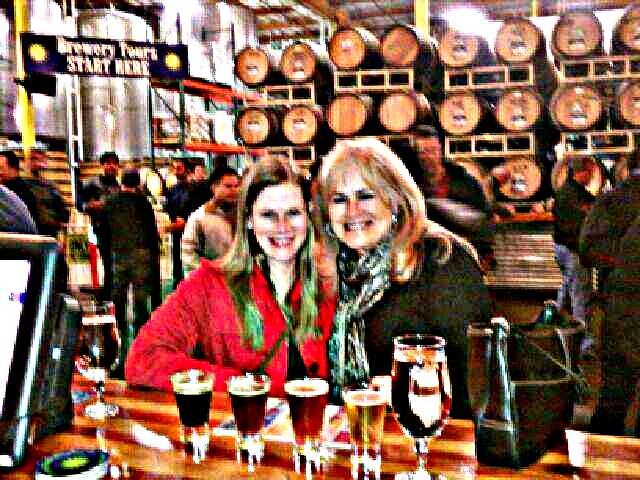
(Instagramed because John, in his efforts to provide excellent beertending services, provided only mediocre photography services.)
After our tasting, we wandered around the beer garden and encountered the night’s dinner offering. Green Flash partners with local food trucks to offer its guests sustenance and a variety of treats as they sample its array of beers. That night, Stuffed pulled up to the beer garden and sorely tempted us with its stuffed burgers, spicy mac & cheese, and fried oreos.


However, Corliss had grander plans for us: we were headed for Strip Club. She assured me that the only meat market there involved preparing your own.





